Abstract
Duerre, John A. (University of North Dakota, Grand Forks), and Patrick J. Buckley. Pigment production from tryptophan by an Achromobacter species. J. Bacteriol. 90:1686–1691. 1965.—A microorganism was isolated from the soil near the University of North Dakota. Biochemical and morphological characteristics indicated that this organism would best be classified as a member of the family Achromobacteraceae, genus Achromobacter, species unknown. The organism produced a red pigment when grown in a medium containing yeast extract and tryptophan. The pH optimum for pigment production was about 8.0 and the optimal temperature was 25 C. During a study of the nutritional requirements for growth and pigment production, it was found that the organism would grow and produce pigment in a medium containing tryptophan and nucleosides, but the rate of both growth and pigment formation in this medium was slower than that observed with tryptophan and yeast extract. The organism grew well in the presence of acid-hydrolyzed casein and nucleosides without producing pigment, indicating that the pigment is not necessary for growth. Resting-cell experiments definitely established tryptophan as the sole exogenous requirement for pigment production. The pigment was extracted from yeast extract-tryptophan medium with chloroform. Thin layer chromatographic analysis of the crude pigment extracted from this medium revealed the presence of two other pigments in addition to the major red pigment. One of these was a highly fluorescent orange pigment and the other a pink pigment. Only the red pigment was produced by resting cells in the presence of tryptophan alone. This pigment served as an electron acceptor when coupled with formic dehydrogenase, indicating its possible function as an oxidation-reduction pigment. The oxidized pigment had absorption peaks at 506 and 304 mμ. The peak at 506 mμ disappeared upon reduction with sodium sulfite. Shaking the reduced pigment in air proved to be an unsatisfactory method for returning the reduced pigment to the oxidized, colored state.
Full text
PDF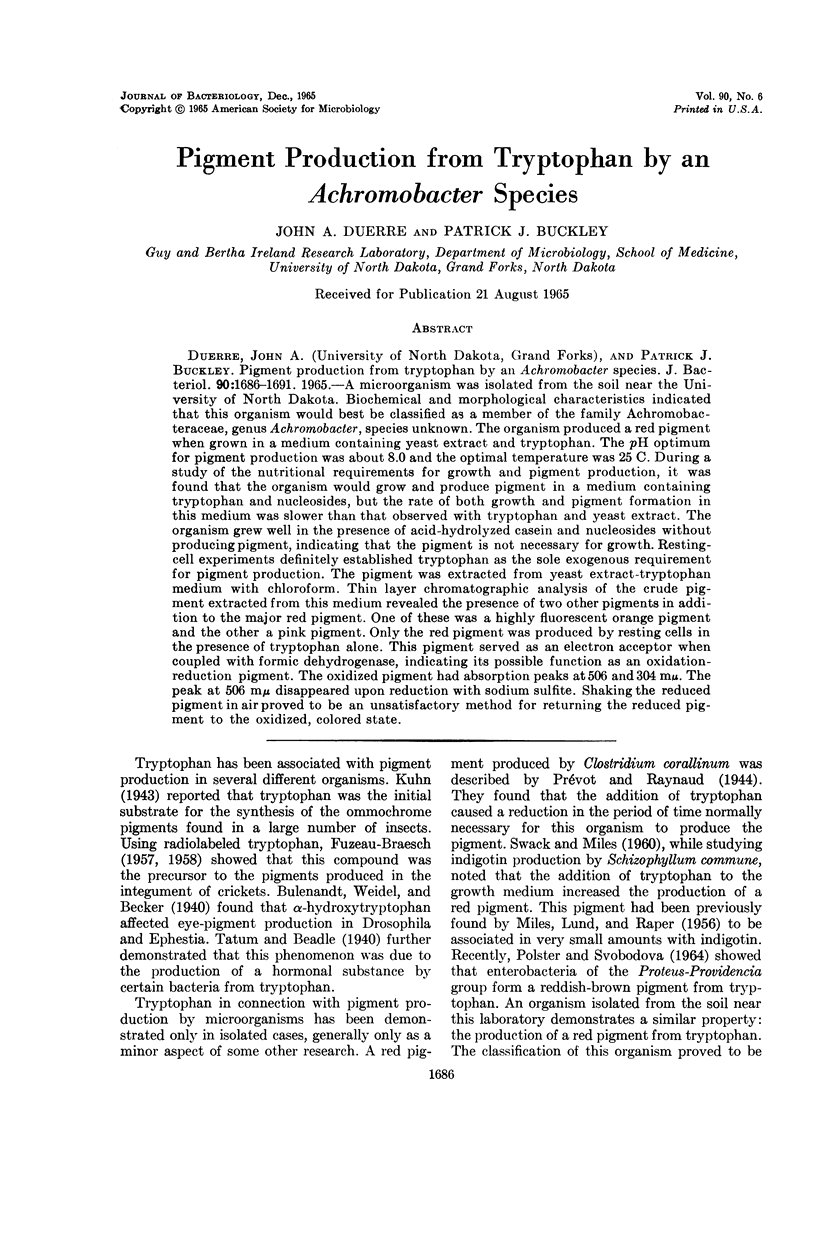
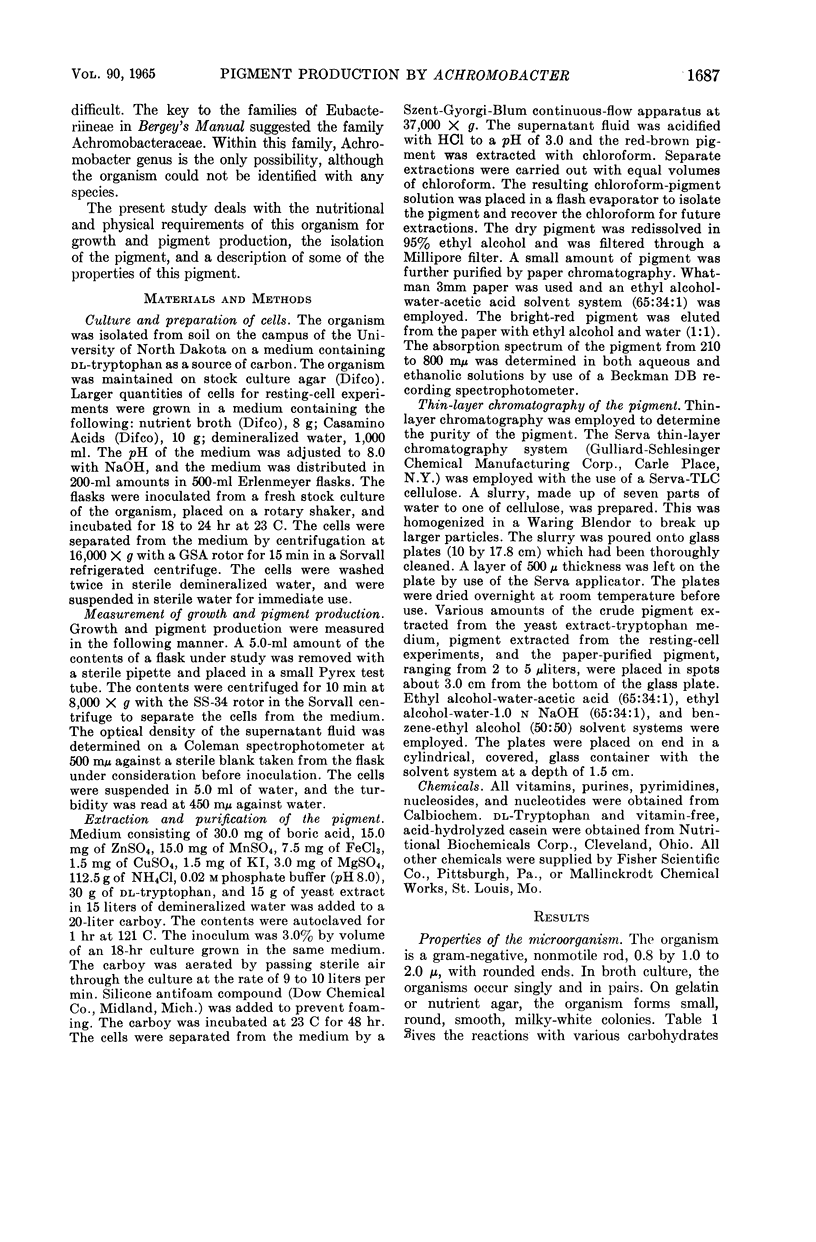
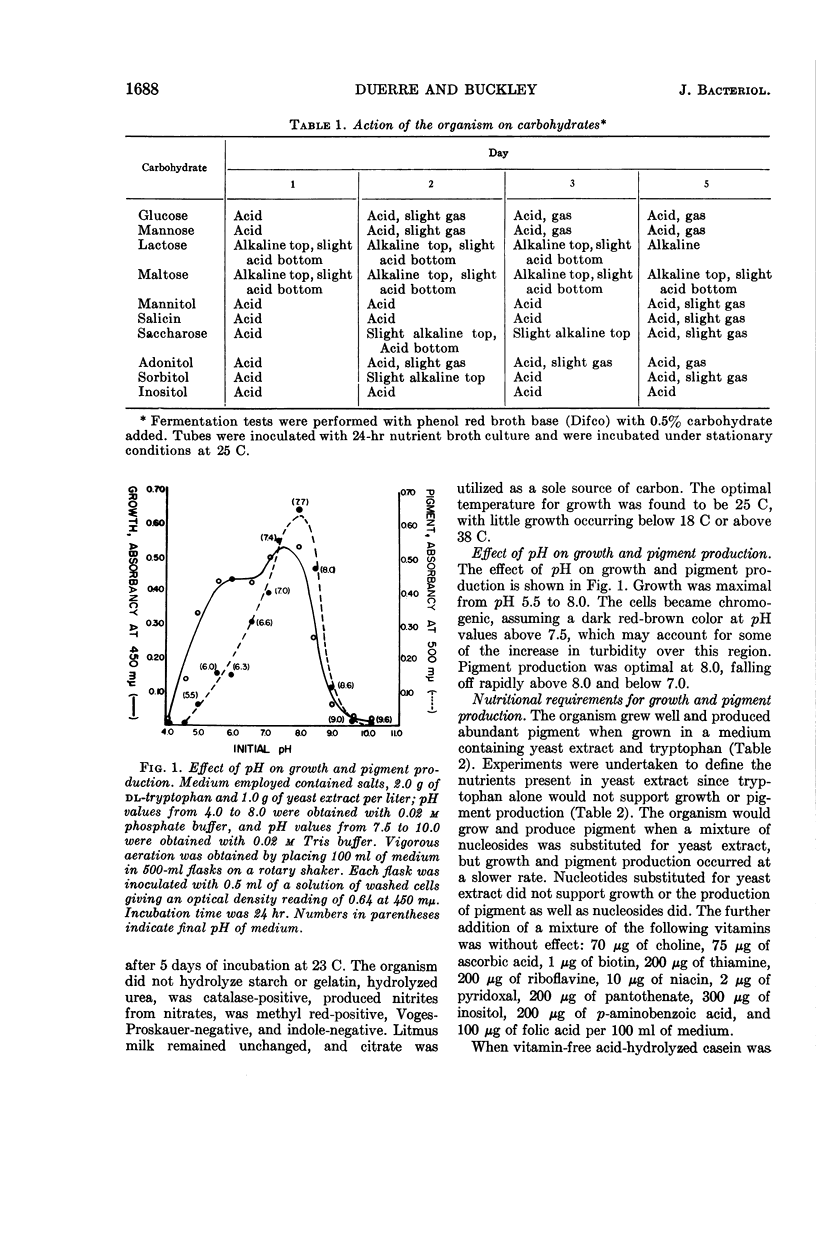
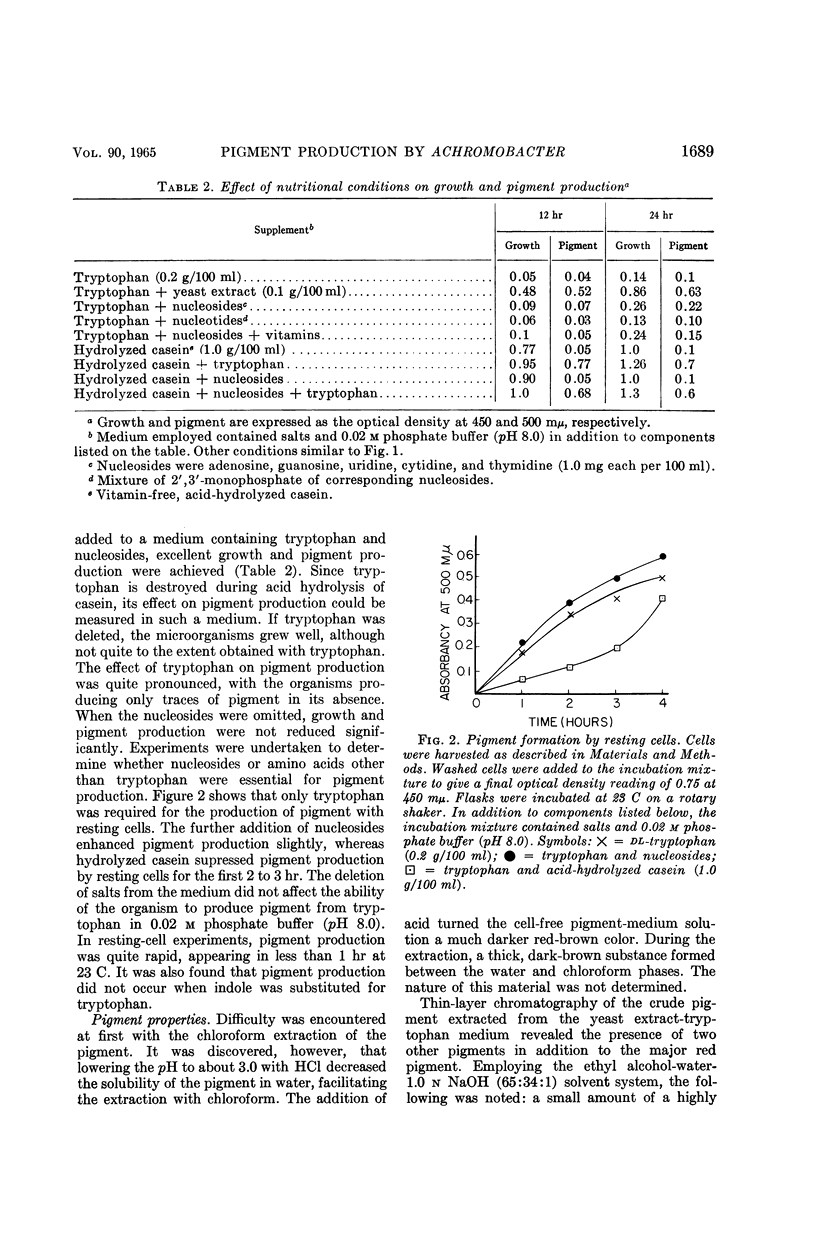
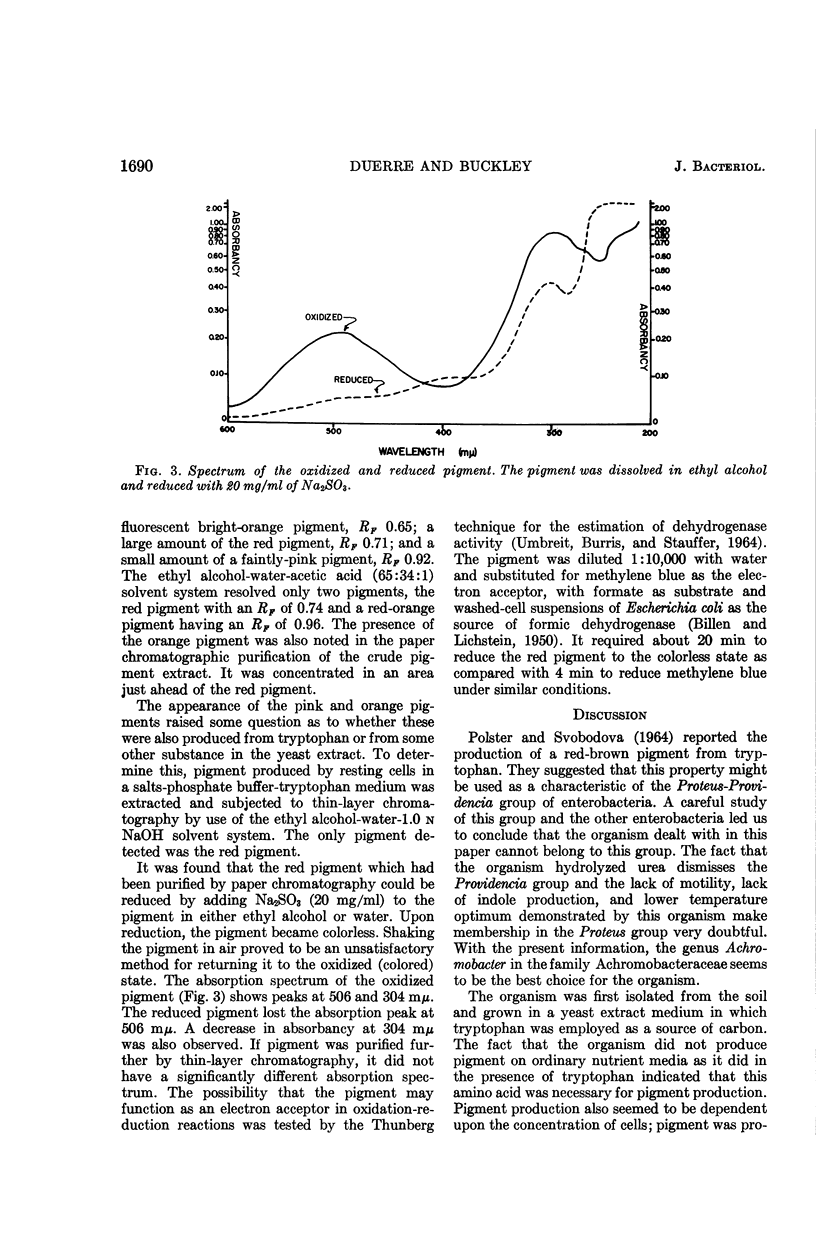
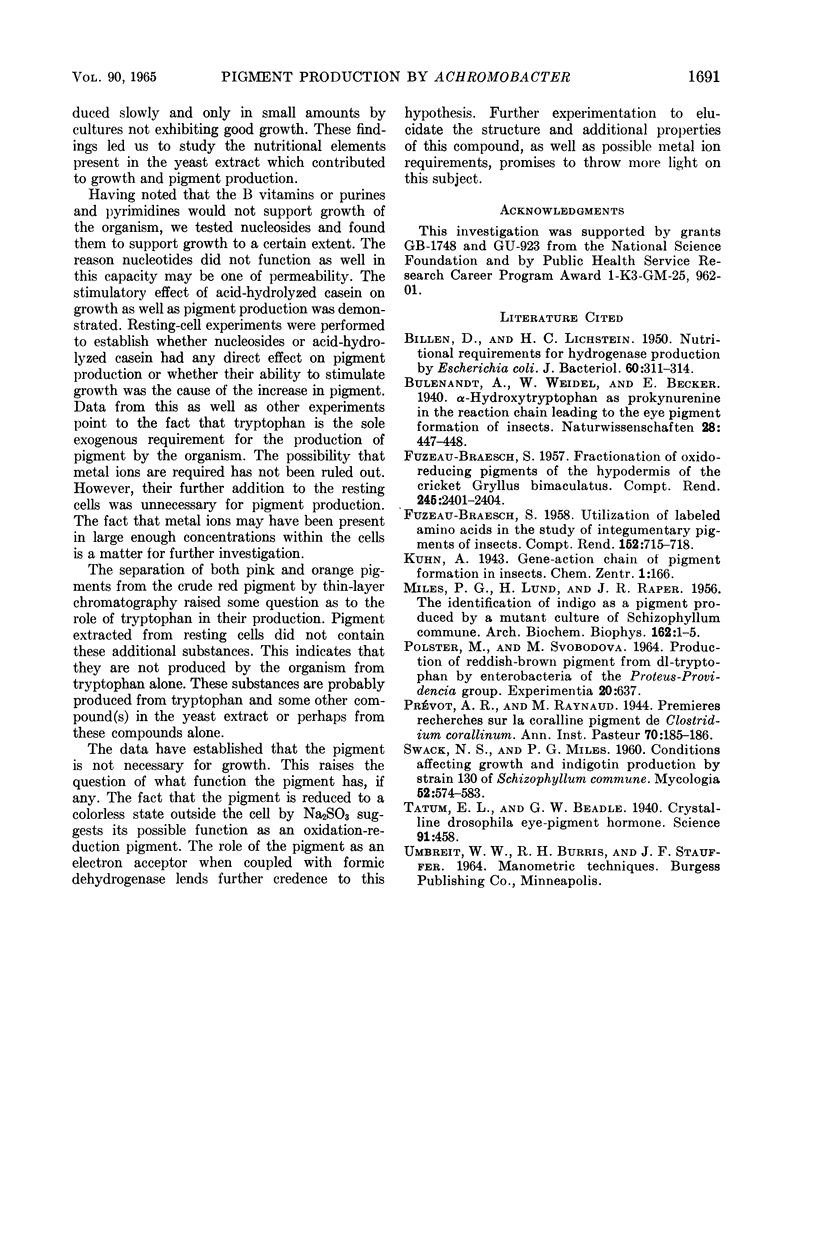
Selected References
These references are in PubMed. This may not be the complete list of references from this article.
- BILLEN D., LICHSTEIN H. C. Nutritional requirements for hydrogenase production by Escherichia coli. J Bacteriol. 1950 Sep;60(3):311–314. doi: 10.1128/jb.60.3.311-314.1950. [DOI] [PMC free article] [PubMed] [Google Scholar]
- FUZEAU-BRAESCH S. Utilisation d'acides aminés marqués dans l'étude des pigments tégumentalres des insectes. C R Seances Soc Biol Fil. 1958;152(5):715–718. [PubMed] [Google Scholar]
- MILES P. G., LUND H., RAPER J. R. The identification of indigo as a pigment produced by a mutant culture of Schizophyllum commune. Arch Biochem Biophys. 1956 May;62(1):1–5. doi: 10.1016/0003-9861(56)90081-9. [DOI] [PubMed] [Google Scholar]
- Polster M., Svobodová M. Production of reddish-brown pigment from dl-tryptophan by enterobacteria of the Proteusprovidencia group. Experientia. 1964 Nov 15;20(11):637–638. doi: 10.1007/BF02144835. [DOI] [PubMed] [Google Scholar]
- Tatum E. L., Beadle G. W. CRYSTALLINE DROSOPHILA EYE-COLOR HORMONE. Science. 1940 May 10;91(2367):458–458. doi: 10.1126/science.91.2367.458. [DOI] [PubMed] [Google Scholar]


